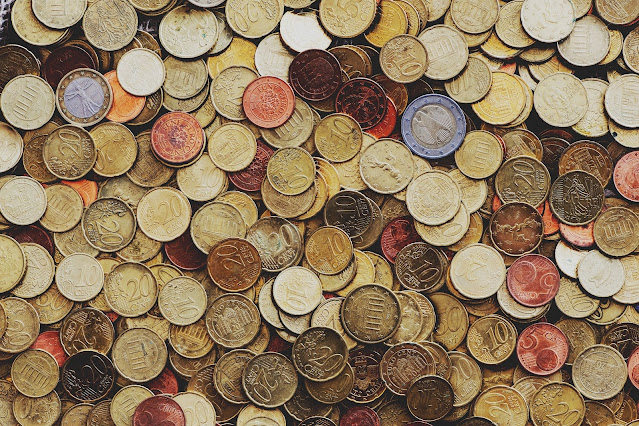
If you’re a fiery fan of CounterStrike games, you’ve probably come across numerous CS: GO trading websites. These are trading platforms that allow you to trade, sell or buy pretty much any of the CounterStrike: Global Offensive in-game items and digital goods for a relatively appropriate fee.
These in-game items include miscellaneous, case-keys, weapons, and skins. You can trade all these items on official marketplaces like Steam and third-party CS:GO trading sites. Speaking of trading sites, there are a lot of different websites providing CS: GO trading services.
Some websites do it for an affordable fee, while some require a larger commission. If you’re new to this fresh trading market, this short guide should show you the ropes and teach you a few things about the skins trade.
Skins Were Introduced in CS: GO
CS: GO skins were first introduced to the game in 2013 and have been an essential part of the game ever since. Players can now trade, sell or buy skins using various third-party trading sites and markets at their disposal.
These skins are in-game cosmetic items that players can use to add to the appearance of their in-game character’s equipment, such as gloves, knives, and weapons. Each item is unique and purely cosmetic, meaning that it doesn’t alter or change the gameplay mechanics in any way. Players can add to their individuality and express their gaming personality by using various skins.
That’s how skins became a crucial part of the game, giving rise to various skin trading websites and the Steam-powered marketplace. Depending on multiple factors, skins can significantly vary in price and the ways players obtain them. There are eight types of CS: GO skins, with the rarest skins reaching thousands of dollars.
Release of CS: GO Workshop
In 2013, a new update introduced the maps workshop along with the map, Assault. The Steam Workshop is a database for uploading content created by players. It’s available on Steam and allows players to make content for the game.
Players with great ideas for a new sticker, skin, or weapon can use all the options available in the workshop to create in-game maps, stickers, weapons, and more. This workshop has two sections: the Items Workshop and the Maps Workshop.
The Items Workshop allows players to upload custom music kits, stickers, and skins directly to the online workshop. The Maps Workshop enables players to upload custom maps directly to the Maps Workshop, where other players can vote on the best map ideas. The best ideas will get included in the game by Valve.
New Items Being Released
New skins don’t just pop up that often, but they are regularly available if you keep up with the latest information. If you want to stay on top of things, the best way is to keep track of the CS: GO release note blog.
The blog will keep you up to date with all the latest news regarding new items being released. If you’re after the newest in-game items, your best option is to either look for it on the most prominent CS: GO trading websites or the official Steam-powered market.
It’s also possible to get new items for free, but it’s a bit time-consuming as the only way to get new skins for free is by playing the game and hoping to find new items via random case drops.
Development of Marketplace Services
CS: GO marketplaces are platforms where players can sell, buy or trade virtual CS: GO goods and in-game items. These marketplaces provide different payment options and trading methods, including in-game values, cryptocurrencies, and real money.
Depending on the criteria they meet, marketplaces differentiate by the level of customer support, user numbers, security mechanisms, level of transparency, and others. Steam Community Market is the official CS: GO trading marketplace where you can buy CS: GO skins and every other in-game item. There are also third-party trading websites that offer faster and cheaper trading services.
Growth of Traders
Over the past few years, the number of CS: GO skins traders has grown beyond recognition. The rise of so many trading and gambling sites, including the official Steam Marketplace, attracted people from every corner of the planet. The fact that you can trade your skins for real money was enough incentive to give birth to an entirely new industry overnight.
With certain skins reaching mind-bending prices, the number of traders will continue to grow. CS: GO isn’t about the game per se but more about the immense gaming community that keeps getting bigger with each passing day.
Item Price Changes
When it comes to their price, item prices constantly vary and change. Some skins cost just a few bucks, but certain items reach hundreds or even thousands of dollars. Many different things affect the item price, and it’s a combination of various factors that set the price of a particular item. Some of the driving factors include:
- The item rarity
- The condition of the skin
- Special features
Third-Party Marketplaces
While the most preferred option for trading skins is the official Steam-powered market, third-party marketplaces are also an excellent choice. Steam is considered the most secure trading marketplace, but it only allows you to trade your skins for money that you can only use on Steam directly.
If you want to sell your skins for real money, third-party marketplaces like SkinCashier and Global CS: GO are your best options.
If you want to sell CS:GO skins for real money third-party marketplaces like DMarket, SkinCashier, and Global CS: GO are your best options.
Conclusion
With all this information in mind, you’re now prepared to get into the skins trade like an avid player and discover the best opportunities for yourself. Whether you decide to try your luck on Steam or third-party marketplaces, keep an eye on the driving factors to make sure you get the best prices for your in-game items.